Chapter: Aquaculture Principles and Practices: Design and Construction of Aquafarms
Cage farms - Design and Construction of Aquafarms
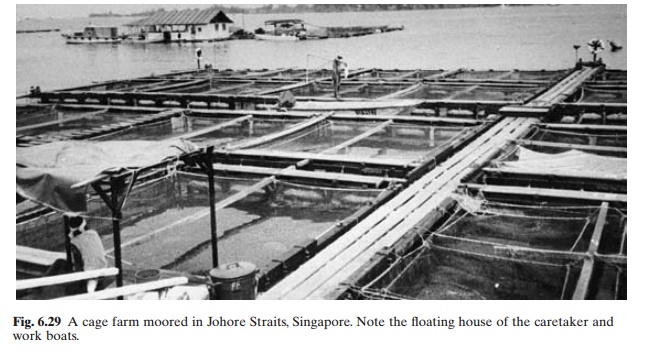
Cage farms
Holding or rearing fish in cages is a traditional practice in some Asian
countries and appears to have originated almost two centuries ago in Kampuchea,
from where it spread to Indonesia and Thailand and, in recent times in a more
advanced form, to several other countries. Coche (1979) summarizes the
historical evolution of the concept. It was a general practice in the Great
Lakes area of Kampuchea to hold commercially valuable fish in bamboo cages to
be sold alive. The cages were trailed in water behind a fishing boat for
transport to the markets. Since this often took a long time and some of the
catches were of smaller size, the fishermen began feeding them with trash fish
and kitchen refuse. The fish grew well in the cages and as a result their
market value increased considerably. This naturally led to longer-term rearing
of catfish in Thailand, carp in sewage-fed canals in Java (Indonesia) and later
on yellowtail in Japan and groupers and sea bass in Hong Kong and Singapore.
Through recognition of the value of cage farms in aquaculture and the
opportunities they offer for productive use of open waters, cage culture has
attracted considerable research and development efforts in most parts of the
world. In the last three decades it has become a major source of aquaculture
production, particularly of high-valued species like salmon, trout, sea bass
and groupers. Several types and designs of cages and cage farms have been
developed and are available commercially.
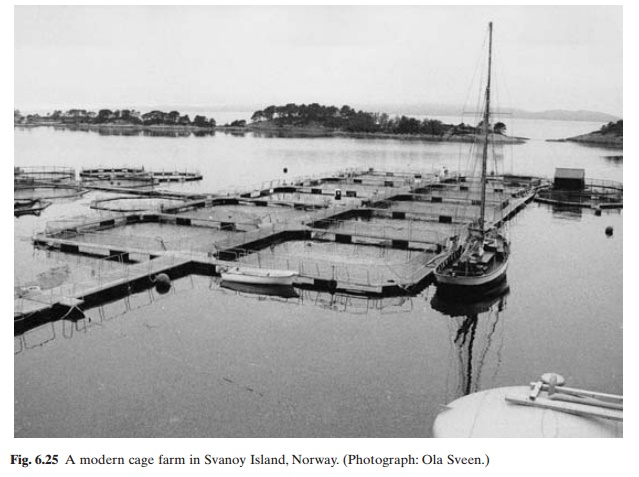
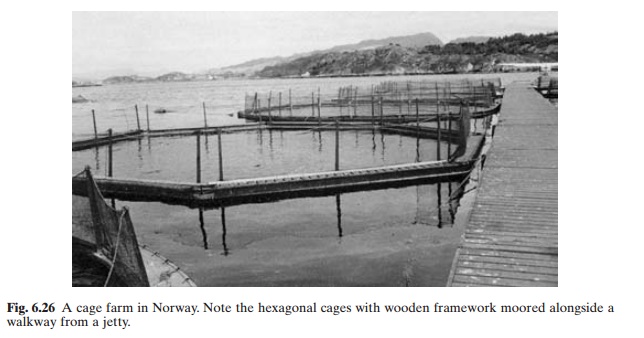
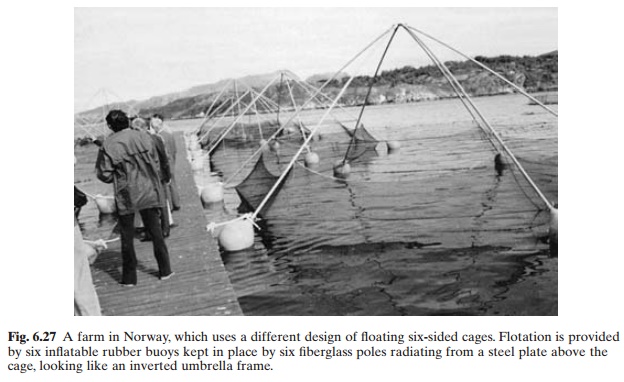

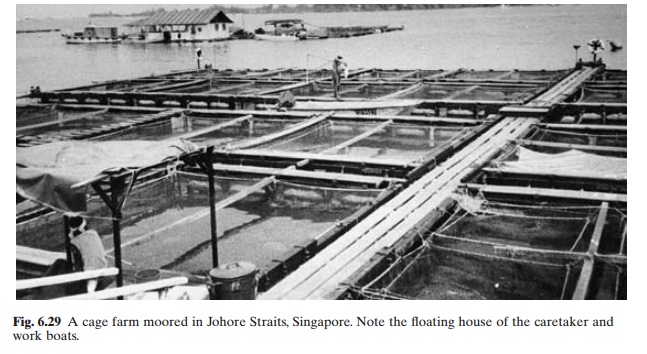
Related Topics